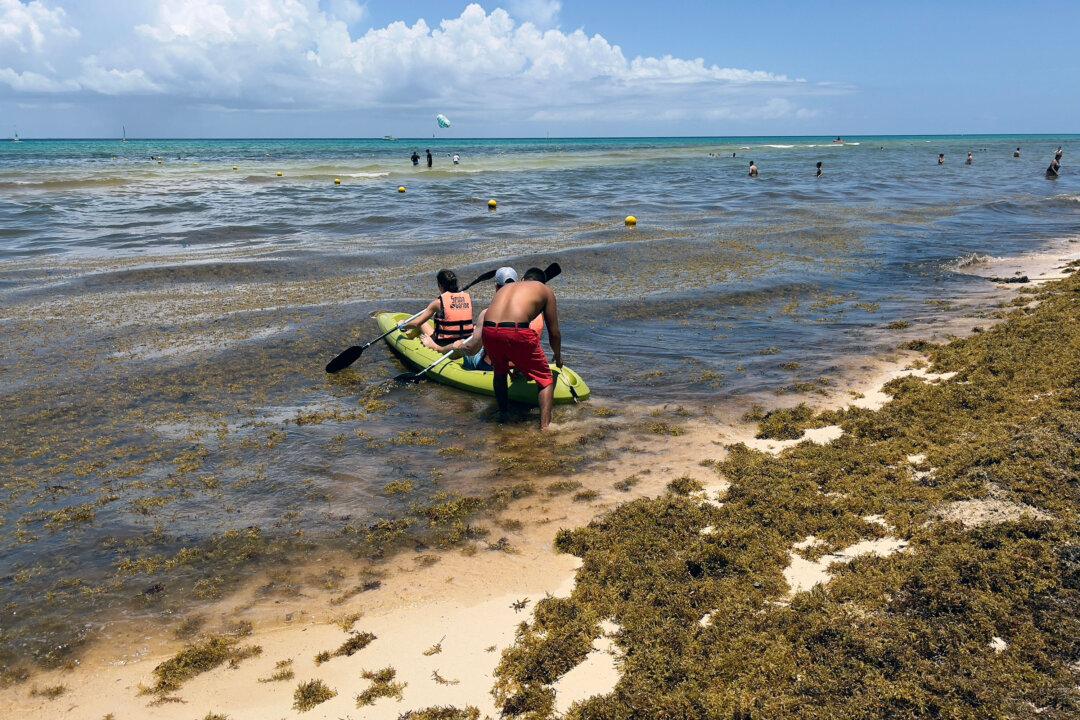According to the Miami Herald, the University of South Florida’s Optical Oceanography Lab revealed that The Great Atlantic Sargassum Belt contained an estimated 13 million tons of seaweed at the end of March, a new record for the period.
As the stinky seaweed continues to increase in size, officials said the massive bloom would reach its peak between June and July, with Weather.com experts revealing that major beaching events are “inevitable” in Florida, the Caribbean, and Mexico throughout the summer.
“Given the complexity of its motion, growth, and decay, it is not possible to forecast the timing of beaching,” a National Oceanic and Atmospheric Administration spokesperson said. “However, given the size and number of the current Sargassum patches, there is a strong chance that Sargassum carried by the Florida Current may reach the Florida coast despite wind and wave conditions.”
In response to USF’s report, the Quintana Roo Sargassum Monitoring Network said the largest landfall this summer would measure an estimated 650,000 tons and impact beaches in Tulum, Playa del Carmen, Puerto Morelos, Cancun, Mahahual, and Xcalak.
According to Reportur.com, the monitoring network’s director Esteban Amaro believes that only 5 percent will reach Mexican beaches, while another 90% would “continue on its way to the Sea of the Sargasso.”
Sargassum seaweed begins to release hydrogen sulfide as it rots, which can cause eye, nose and throat irritation, in addition to a rotten egg odor. Travelers are advised to avoid touching or swimming near the seaweed.
In March, Mexican Secretary of the Navy Jose Rafael Ojeda Duran announced the installation of 9,050 meters (around 29,691 feet) of anti-sargassum barriers, including 1,850 meters in Othon P. Blanco (Chetumal and Mahahual), 2,400 meters in Puerto Morelos, 2,500 meters in Solidaridad (Playa del Carmen and Puerto Aventuras) and 2,300 in Tulum.
Copyright 2023 Northstar Travel Media, LLC. Visit at travelpulse.com. Distributed by Tribune Content Agency, LLC.






